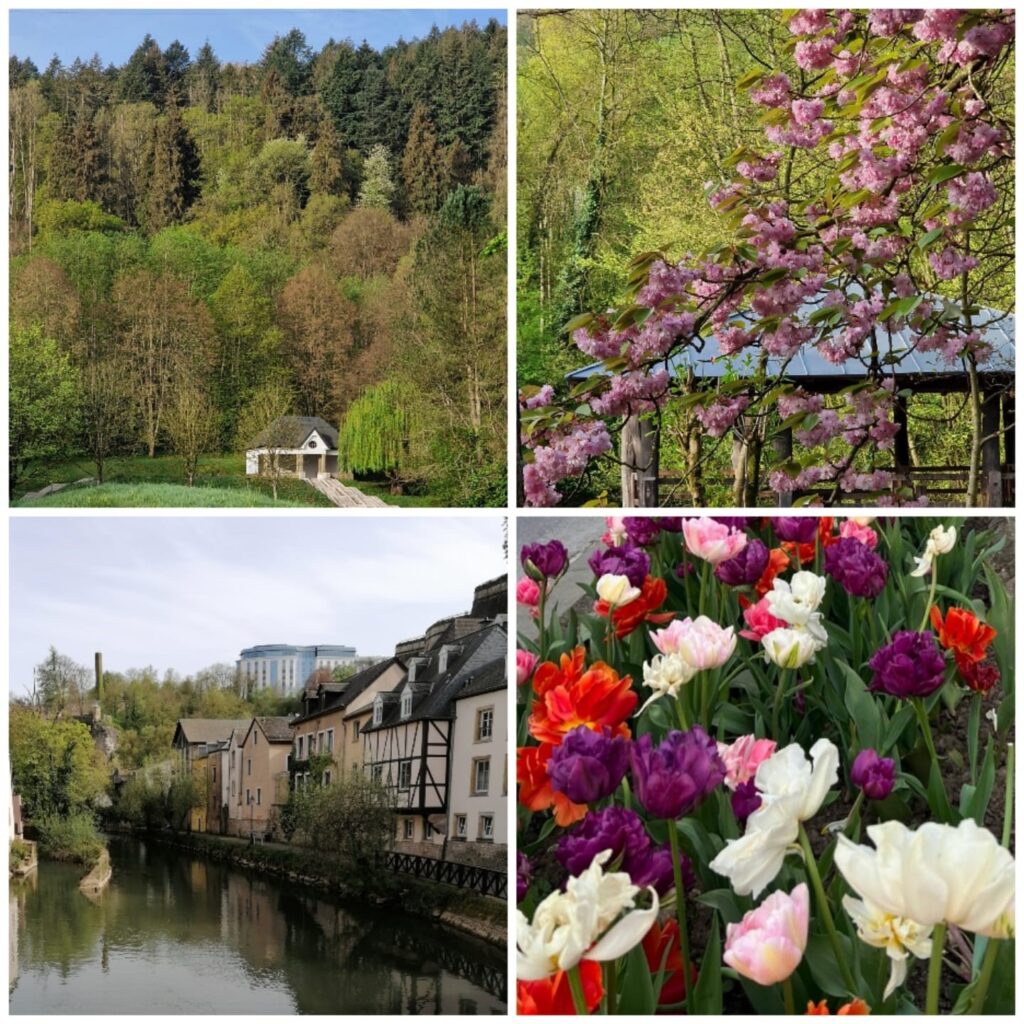I am studying for a Master’s degree in Welfare Coordination (Master of Applied Sciences) at Savonia University of Applied Sciences and I decided to complete my studies by participating in a training course in Luxemburg in April 2024. There I participated in a youth workers’ training course: Youth worker Skill Workshop (YSW) ‘Wellbeing’.

Writers first ”photo of the day” collection featuring photos from Luxembourg.
This short training course was focussed on increasing wellbeing for youth workers or other people who are working with youngsters on the field of non-formal learning. The focus was both developing well-being in youth work practice and daily life. The training aimed at youth workers suited me well, as I primarily have been working with young people. The training course was also interesting because it focused on the personal wellbeing of the worker. So far, the welfare coordinator studies I have completed have focused on welfare work in society perspective.
During the training course we handled many theories and practices how to take care of own wellbeing. One interesting aspect is gratitude.
What is gratitude? Latin word gratia means grace, graciousness or gratefulness. Gratitude is an emotion expressing appreciation events that have happened or what one has. Man can also feel gratitude for something or gratitude in a moment. Even if the moment has been difficult or time has been challenging, man can afterwards feel gratitude.
Why practice gratitude? Gratitude increases positive thoughts, which encourages more positive feelings and emotions. It can make us feel more optimistic and energetic about future, to ahead more positively. Therefore, gratitude also helps us feel more connected with other people, to value them and be valued by them.
How to practice gratitude? It is easy to slow down and practice looking for beauty everywhere. Maybe taking a beautiful photo every day, let´s say like during one month. After month it is nice to watch all beautiful photos, relax and enjoy the beauty of surroundings. If you like writing, you could write down 3-5 things you are grateful for at the end of each day. This way you can create your “Gratitude journal” writing something you have experiences or someone has done for you that day. You can also share the gratitude with other people. Write a letter – write with pen and paper – to say “Thank you” to someone you think deserve it. Handwritten and maybe also hand delivered letter makes the experience more powerful and personal.
If you feel you pretend to be too busy for any extra practices, remember, you can just slow down. On your way to work, during your lunch or coffee break and take notice of any actions or experiences and express that you are grateful for this moment, this person or this activity.
Gratitude is one way for self-care.
It is okey to take care of yourself, so you take care of your own wellbeing.
You are the most valuable person for yourself.
Written by wellbeing coordinator student Virpi Tuovinen
The organizer of this training course was SALTO-YOUTH. As part of the European Commission’s Training Strategy, SALTO-YOUTH provide non-formal learning resources for youth workers and youth leaders and organises training and contact-making activities to support organisations and National Agencies (NAs) within the frame of the European Commission’s Erasmus+ Youth programme, the European Solidarity Corps, and beyond.
Read more:
SALTO-YOUTH (https://www.salto-youth.net/)
Gratitude (https://positivepsychology.com/gratitude-appreciation/)
Erasmus + nuorisoalalle (https://www.oph.fi/fi/kehittaminen-ja-kansainvalisyys/eu-ohjelmat-nuorisoalalle)
